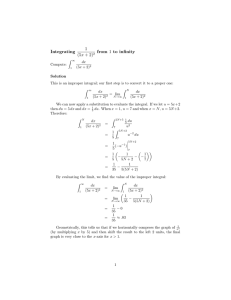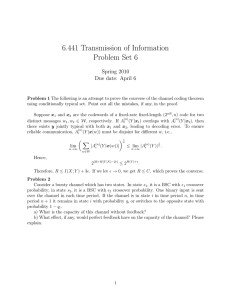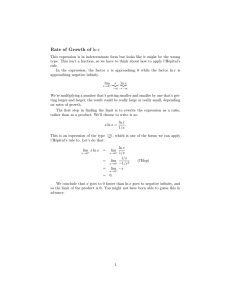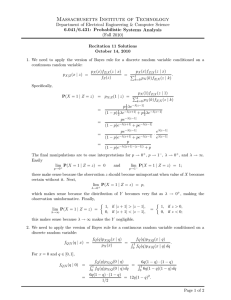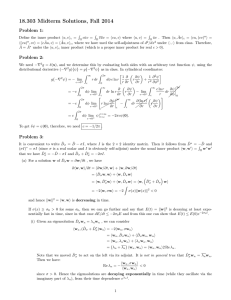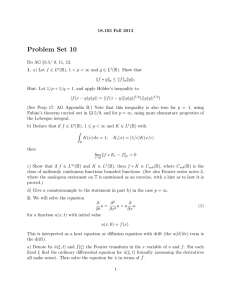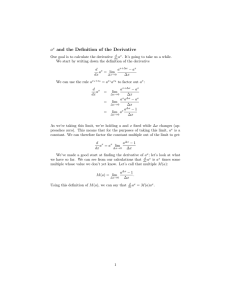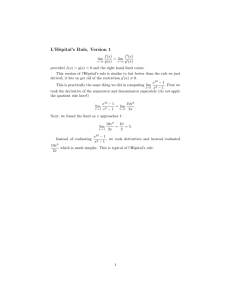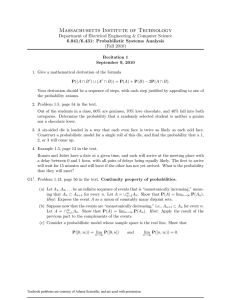Problem Set 2, updated version
advertisement
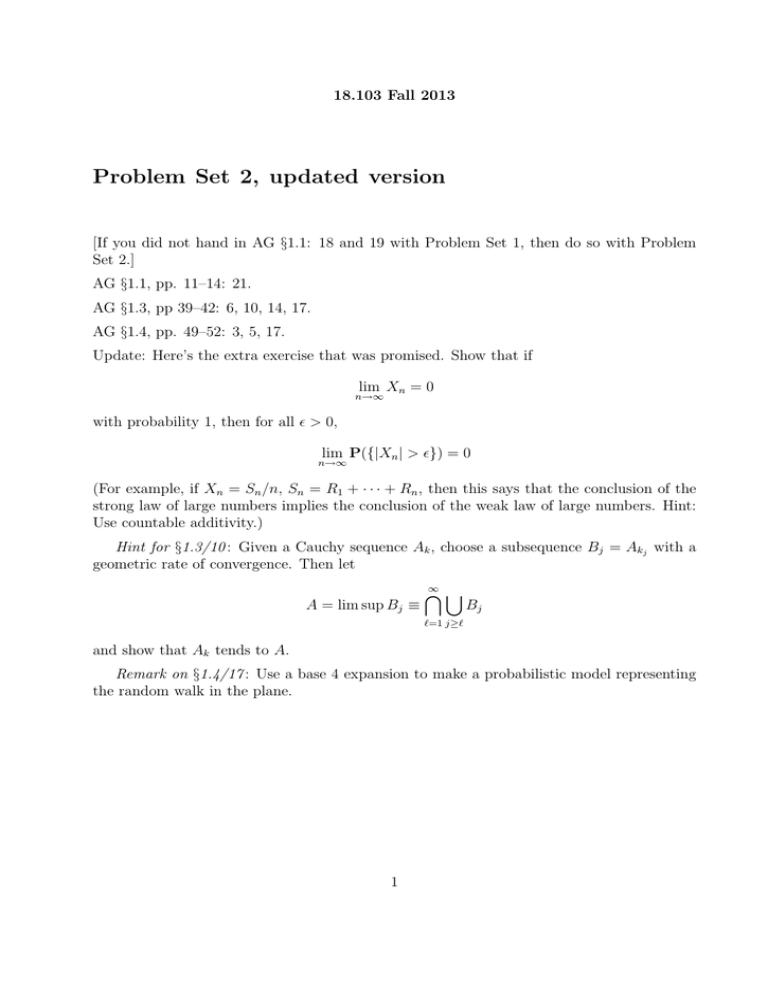
18.103 Fall 2013
Problem Set 2, updated version
[If you did not hand in AG §1.1: 18 and 19 with Problem Set 1, then do so with Problem
Set 2.]
AG §1.1, pp. 11–14: 21.
AG §1.3, pp 39–42: 6, 10, 14, 17.
AG §1.4, pp. 49–52: 3, 5, 17.
Update: Here’s the extra exercise that was promised. Show that if
lim Xn = 0
n→∞
with probability 1, then for all > 0,
lim P({|Xn | > }) = 0
n→∞
(For example, if Xn = Sn /n, Sn = R1 + · · · + Rn , then this says that the conclusion of the
strong law of large numbers implies the conclusion of the weak law of large numbers. Hint:
Use countable additivity.)
Hint for §1.3/10 : Given a Cauchy sequence Ak , choose a subsequence Bj = Akj with a
geometric rate of convergence. Then let
A = lim sup Bj ≡
∞ [
\
Bj
`=1 j≥`
and show that Ak tends to A.
Remark on §1.4/17 : Use a base 4 expansion to make a probabilistic model representing
the random walk in the plane.
1
MIT OpenCourseWare
http://ocw.mit.edu
18.103 Fourier Analysis
Fall 2013
For information about citing these materials or our Terms of Use, visit: http://ocw.mit.edu/terms.
